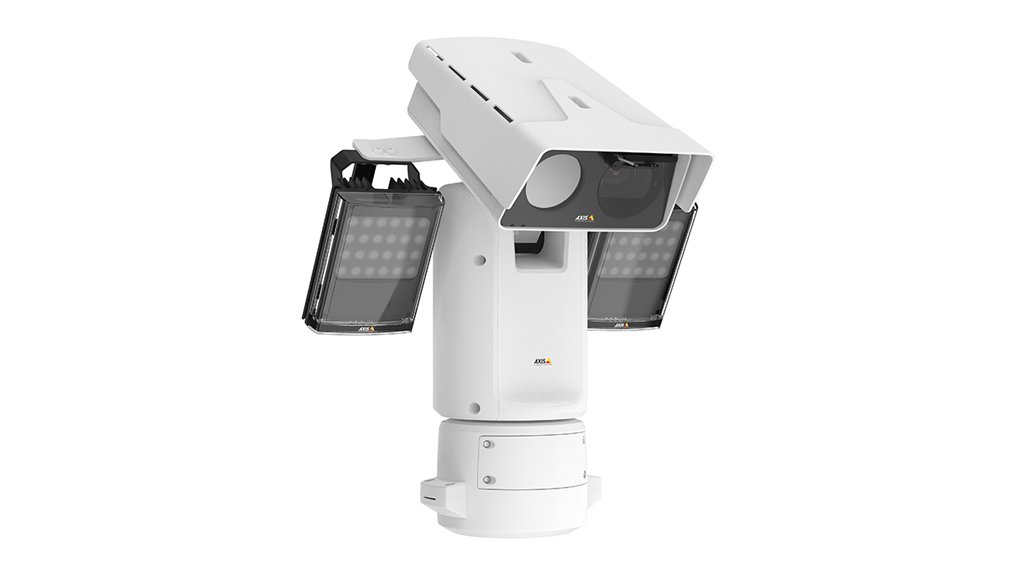Multifunctional security tech can boost productivity



BEYOND BASIC Axis’s camera technology can introduce and improve operational efficiencies at a mine, beyond basic security functions
THIRD-PARTY COMPATIBLE The solutions offered by Axis can coexist with a mine’s existing systems, as the company always follows mainstream protocols, which is not the case with all surveillance systems
While response to the new technologies needed for South Africa’s mines of the future are mixed, decision-makers are gaining a better understanding of how one device can serve several functions to boost productivity amid a changing mining landscape, says Sweden-headquartered video surveillance company Axis Communications Middle East and Africa engineering and training manager Rudie Opperman.
“There’s more than one function to a security camera. Axis’ camera technology can introduce and improve operational efficiencies at a mine, beyond basic security functions,” he explains, adding that many of Axis’ devices generate metadata, which can be used in real time and for forensic purposes.
For example, miners have recently explored the use of isothermal heat-detection cameras, which are offered by Axis, in lowering expenditure associated with overheating equipment.
“We also offer intrusion systems across large perimeters, where radar thermal technology is used in combination with other systems, to create a robust thermal barrier to ensure the safety of employees and identify security threats to prevent financial loss. Our product offering also accommodates the mining industry’s need for rapidly deployable temporary structures that allow for surveillance systems to move with the operation while withstanding harsh operating conditions,” elaborates Opperman.
However, while a device can serve more than one purpose, technology can be overengineered, resulting in a basic task becoming overcomplicated, owing to the incorrect application of the technology, as the use case was misconstrued, says Axis Communications Africa sales manager Marcel Bruyns.
The solutions offered by Axis can coexist with a mine’s existing systems, as the company always follows mainstream protocols, which is not the case with all surveillance systems, says Opperman.
“We also recently started applying deep learning technology throughout our entire portfolio to allow for more advanced features and analytics to be incorporated when miners invest in new hardware, while enabling them to port these new solutions and avoid further expenses.”
Further, object recognition capabilities are becoming much more accurate and can be employed to ensure that workers are wearing the correct personal protective equipment before entering the mine or when moving around the site.
However, as solutions become more intelligent, cybercrime becomes a growing threat.
“That’s why Axis has adopted a secure-by-design approach. All our products have built-in cybersecurity features and our hardware is built to keep information secure. Axis has also simplified the life-cycle management of our devices.
“It can be difficult for operators to keep up with the latest firmware and keep their security policies up to date. We offer tools that mines can use to manage all their devices, check when their warranties run out, and plan ahead – all from a central location,” advises Opperman.
Consequently, the transition to securely connected, intelligent mining systems will, ultimately, help prevent unforeseen accidents, as well as streamline and ensure more informed decision-making regarding mining operations.
Limiting Uptake
A convergence of generations is slowing the adoption of new technologies, notes Bruyns.
“The younger generation is picking up on and adopting this technology a lot faster, while older generations may push back and, instead, prefer to have more basic systems in place.”
Key decision-makers may lack awareness, while engineers tasked with overseeing these systems can lack education or knowledge beyond their expertise, adds Opperman.
As no two mines are the same, thought processes differ. There is also a substantial amount of conflicting information within the technology industry, making it difficult to apply a blanket approach to encourage the adoption of new technologies.
“Consequently, there is a growing need to educate decision-makers so that they understand the risks and benefits, after which they can make informed decisions. All this depends on where the mine is in terms of its awareness of what’s available, and what the risks and pitfalls are.
“In addition to promoting education, mines must investigate whether their supply chains can be trusted to determine what solutions are available, whether they are effective, their origin and how they are being fed into their operations,” advances Opperman.
Axis tries to understand a mine’s safety and security concerns from the start.
“We identify their assets, the movement of people and vehicles and, from there, we determine what technologies can improve these flows. Our end-customers drive the conversation and we expose them to and cocreate as many solutions as possible,” explains Opperman.
Bruyns adds that security is often a grudge purchase, but Axis helps customers to understand it better and transform it into a long-term investment by optimising the technology and ensuring it grows in conjunction with the mine.
The technologies offered by Axis have been available for some time, but the company is constantly revisiting and repackaging them with the latest enhancements that best assist operations, says Opperman, noting that locally, gold, diamond and platinum mines have been most receptive to the company’s solutions.
Comments
Press Office
Announcements
What's On
Subscribe to improve your user experience...
Option 1 (equivalent of R125 a month):
Receive a weekly copy of Creamer Media's Engineering News & Mining Weekly magazine
(print copy for those in South Africa and e-magazine for those outside of South Africa)
Receive daily email newsletters
Access to full search results
Access archive of magazine back copies
Access to Projects in Progress
Access to ONE Research Report of your choice in PDF format
Option 2 (equivalent of R375 a month):
All benefits from Option 1
PLUS
Access to Creamer Media's Research Channel Africa for ALL Research Reports, in PDF format, on various industrial and mining sectors
including Electricity; Water; Energy Transition; Hydrogen; Roads, Rail and Ports; Coal; Gold; Platinum; Battery Metals; etc.
Already a subscriber?
Forgotten your password?
Receive weekly copy of Creamer Media's Engineering News & Mining Weekly magazine (print copy for those in South Africa and e-magazine for those outside of South Africa)
➕
Recieve daily email newsletters
➕
Access to full search results
➕
Access archive of magazine back copies
➕
Access to Projects in Progress
➕
Access to ONE Research Report of your choice in PDF format
RESEARCH CHANNEL AFRICA
R4500 (equivalent of R375 a month)
SUBSCRIBEAll benefits from Option 1
➕
Access to Creamer Media's Research Channel Africa for ALL Research Reports on various industrial and mining sectors, in PDF format, including on:
Electricity
➕
Water
➕
Energy Transition
➕
Hydrogen
➕
Roads, Rail and Ports
➕
Coal
➕
Gold
➕
Platinum
➕
Battery Metals
➕
etc.
Receive all benefits from Option 1 or Option 2 delivered to numerous people at your company
➕
Multiple User names and Passwords for simultaneous log-ins
➕
Intranet integration access to all in your organisation




















